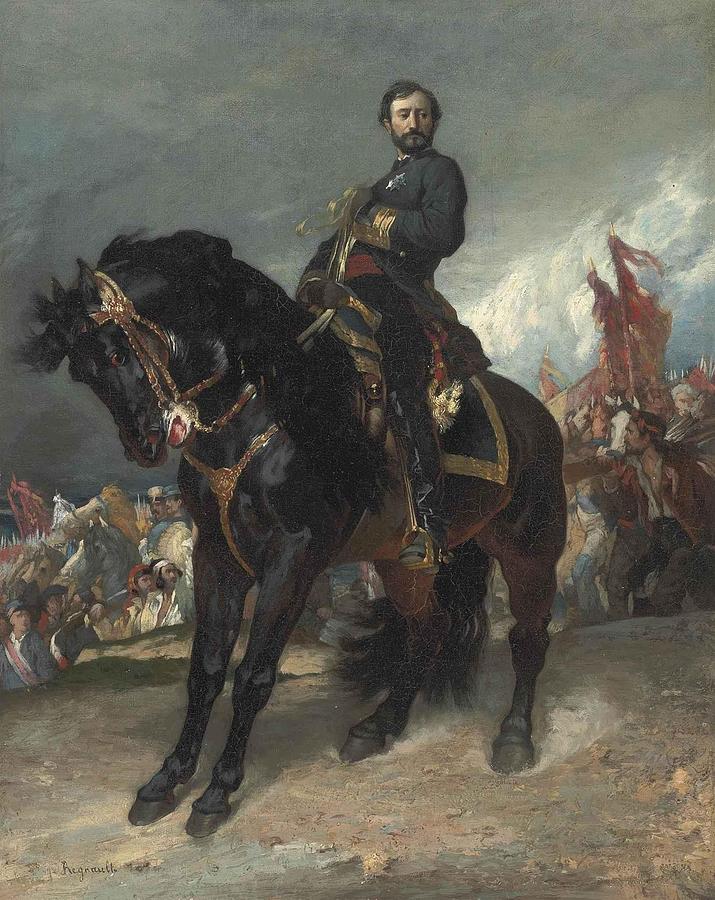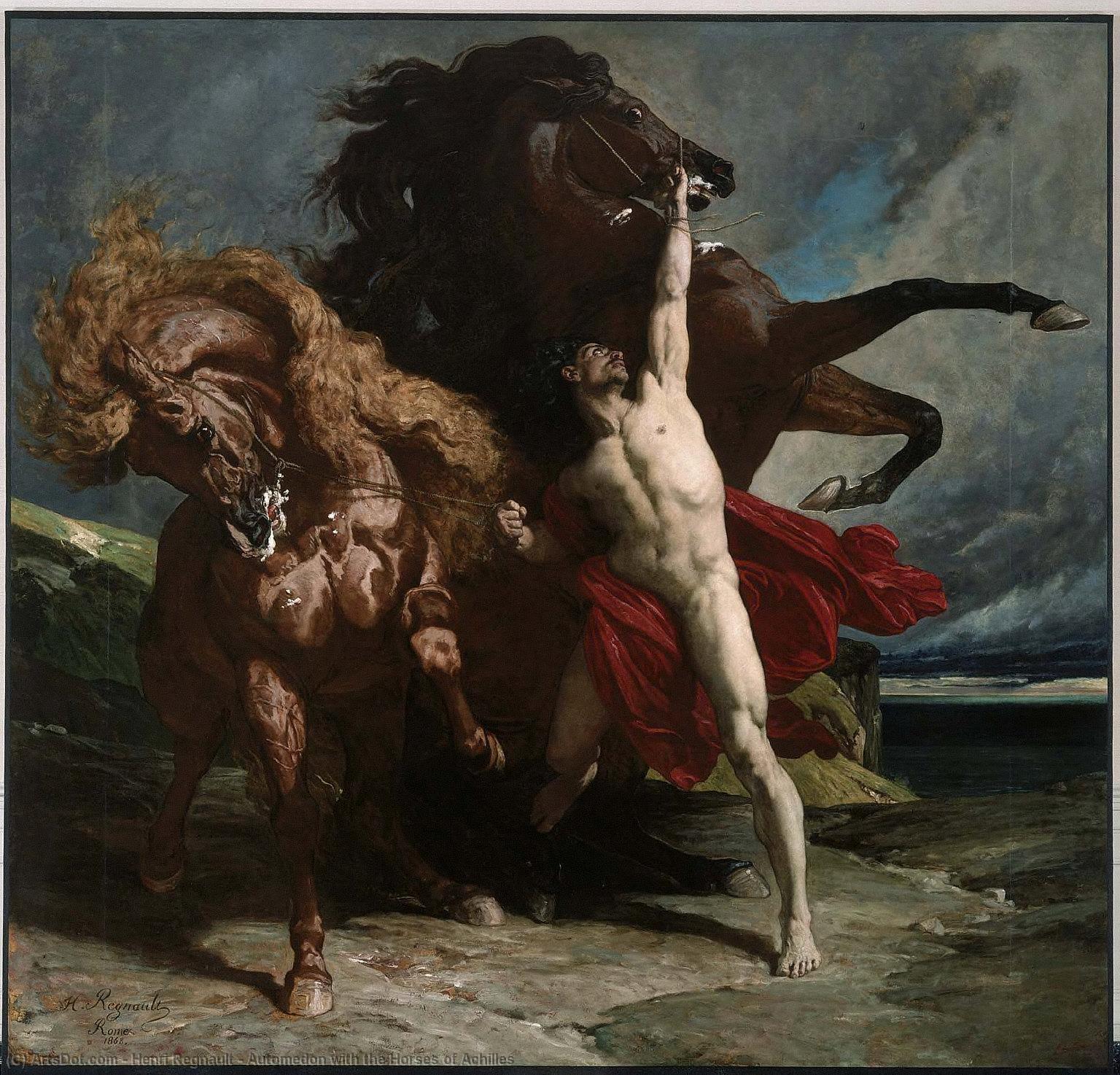Henri Regnault painted this astonishing work in Rome in 1868 he was only 25 at the time. It shows the two divine horses of Achilles, Xanthos and Balios, with Automedon, Achilles’s muscle-bound groom. Three years later, Regnault was dead.
Regnault was himself a fine horseman.
Regnault won the French Academy’s prestigious Rome Prize in 1866. The award granted its recipient five years’ study abroad, requiring him to send back one painting each year demonstrating progress.
The first was to be a modest, single-figure nude, displaying the student’s mastery of anatomy, but the ambitious Regnault instead sent home this mammoth, operatic canvas.
Inspired by Homer’s “Iliad,” the painting depicts Automedon—Achilles’ charioteer—straining to rein in the Greek warrior’s divine horses.

Aware that they will carry Achilles into his final, fatal battle, the hero’s colossal horses writhe, frothing at the mouth. “I wanted to give the picture a foretaste of disaster,” Regnault explained; along with the foreboding sky, the horses are harbingers of Achilles’ imminent fate, one which the young artist himself would ultimately share.

Though his award exempted him from military service, Regnault returned home to France to fight in the Franco-Prussian War and was tragically killed during the siege of Paris at the age of twenty-seven.
Inscriptions
Lower left: H. Regnault / Rome. / 1868
Provenance
By 1872, acquired in France by Levi Parsons Morton (b. 1824 – d. 1920), New York [see note 1]; March 1, 1882, Morton sale, George A. Leavitt and Co., New York, lot 157, to Samuel A. Coale, St. Louis, MO [see note 2]; 1890, sold by Coale to the MFA for $1000. (Accession Date: June 17, 1890)
The painting was executed in Rome in 1867/1868 and sent by the artist to Paris. Notes in the curatorial file indicate that Morton acquired it in France, where he served as U.S. Minister, though how and when is not known.
It was first published as being in his possession by Henri Cazalès, “Henri Regnault: sa vie et son oeuvre” (Paris, 1872), p. 141. [2] In 1883, Coale exhibited the painting at William and Everett Gallery, Boston. It was on loan to the MFA from 1884 until 1890, during which time funds were raised for its purchase.









